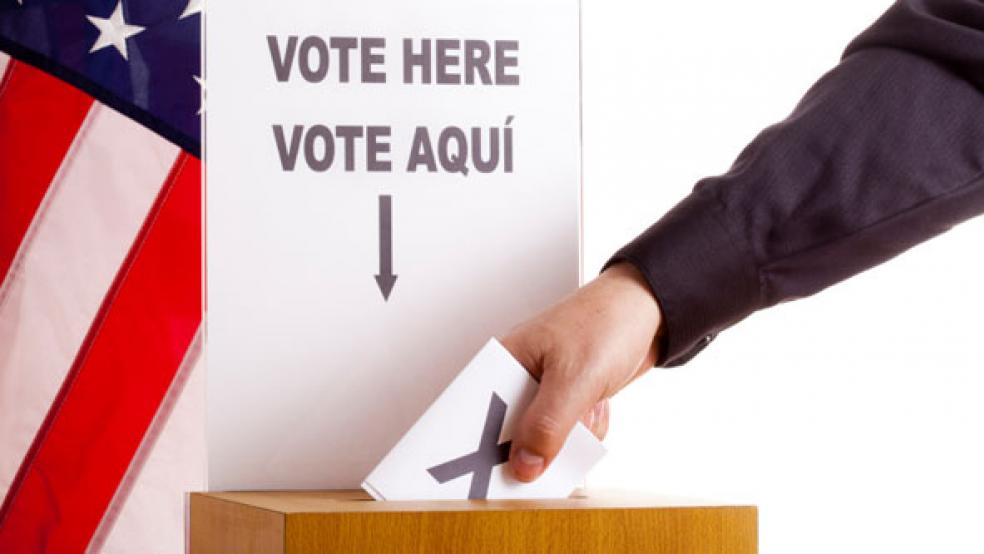The conventional wisdom in Washington, even among many in the Republican Party, is that the GOP is putting the future of the party at risk by not passing immigration reform and thus alienating Latino voters.
The concern was raised very publicly in the Republican National Committees’ report on the 2012 elections, released last year. In that report, well respected Republicans -- Haley Barbour, Sally Bradshaw, Ari Fleischer, Zori Fonalledas and Glenn McCall --warned that the GOP would not be competitive in future elections without Latino support.
Another argument in favor of immigration reform comes from other power brokers in the GOP, including the Cato Institute, the Manhattan Institute and many business leaders who say the current system is a drag on the economy. They believe reform will stimulate growth and create jobs.
Related: Why Obama Will Throw U.S. Immigration Laws Overboard
“According to the Pew Hispanic Center, in 2050, whites will be 47 percent of the country while Hispanics will grow to 29 percent and Asians to 9 percent,” the report said. “If we want ethnic minority voters to support Republicans, we have to engage them and show our sincerity.”
For many Republicans, this sincerity could be expressed through immigration reform. Yet the far right of the GOP refuses to compromise, with Sarah Palin saying at CPAC, “The last thing conservatives should do is help the president pass his number-one goal, and that’s amnesty.”
Michael McDonald, who heads the United States Elections Project and researches voting trends, raised new concerns about the Latino vote. Last week. McDonald analyzed Census records and determined that the size of the Latino vote will grow by 2 percentage points from 2012 to 2016 in Florida, Nevada and Colorado, all swing states. It will also go up two points in Arizona, Texas and New Mexico, and go up one point in North Carolina, Virginia and Georgia.
This, combined with the fact that Latinos have voted for Democratic presidential candidates in every election since 1980 - including 71 percent voting for Barack Obama in 2012 - is a worrying trend for Republicans. The chart below from the Pew Hispanic Center shows just how strongly Democrats have broken for Democrats.
Yet according to McDonald, it’s impossible to tell when the size of the Latino vote would be large enough to swing purple and red states to the Democrats.
Related: Why Is Obamacare Leaving Latinos Behind?
“That’s what everyone wants to know, when does the next shoe drop?” McDonald said in an interview. “You’ve already seen shoes drop in places like New Mexico, Arizona and Nevada, which are going to fall off the battleground status.”
“I don’t know when the tipping point is,” he continued. “With Texas, it has a very large Latino population. But they don’t vote. Part of the story has to be how do you get these Latinos to vote.”
McDonald added that the surge in Latino voters is not just coming from new citizens. Many of the children of Latino immigrants are coming of voting age.
Related: These Top Economists All Agree on the Biggest Problem the US Faces
“’We’re going to see up to this point, a number of people who immigrated here, they weren’t citizens of the United States. Now they’re either being naturalized or their children, who were formally citizens but not old enough to vote, will be coming of age,” McDonald said. “We’re seeing a greater share of that population as citizens. These are going to be people who are actually eligible to vote.”
“At some point it will make a difference. Everyone is waiting for that magic point, when is it going to happen. I couldn’t tell you the exact date. There are just too many variables,” he added.
GOP Has Time
Mark Lopez, director of Hispanic Research at the Pew Research Center says Democrats should not assume they would keep Latino voters forever.
“It’s hard to say which way things are going to go. The Hispanic vote has historically supported Democratic presidential candidates,” he said. “Reagan won 35 percent of the Latino vote, and the share of Latinos who vote Republican fluctuates from cycle to cycle. It remains to be seen what will happen.”
Lopez added that the share of the Latino vote Republicans receive in the future depends on the message and the person delivering it.
“It all depends on who the Republican presidential candidate will be,” he said.
Top Reads from The Fiscal Times:





